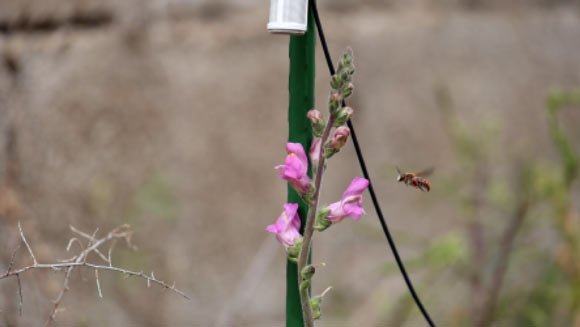Polar ecosystems are structured and enriched by birds, which nest there seasonally and serve as keystone ecosystem members. Despite the ecological importance of polar birds, the origins of high-latitude nesting remain obscured by a sparse fossil record. In new research, paleontologists examined an extreme-latitude assemblage of bird fossils from the Late Cretaceous Prince Creek Formation of Alaska.

An illustration of Cretaceous period birds with other dinosaurs from the same time period in the background. Image credit: Gabriel Ugueto.
“Birds have existed for 150 million years,” said Lauren Wilson, a doctoral student at Princeton University.
“For half of the time they have existed, they have been nesting in the Arctic.”
In the study, Wilson and colleagues analyzed 73-million-year-old fossilized bird bones and teeth from the Prince Creek Formation of Alaska.
They identified multiple types of birds — diving birds that resembled loons, gull-like birds, and several kinds of birds similar to modern ducks and geese — that were breeding in the Arctic while dinosaurs roamed the same lands.
Prior to this study, the earliest known evidence of birds reproducing in either the Arctic or Antarctic was about 47 million years ago, well after an asteroid killed 75% of the animals on Earth.
“This pushes back the record of birds breeding in the polar regions by 25 to 30 million years,” said Dr. Pat Druckenmiller, director of the University of Alaska Museum of the North.
“The Arctic is considered the nursery for modern birds.”
“Finding bird bones from the Cretaceous is already a very rare thing,” Wilson said.
“To find baby bird bones is almost unheard of. That is why these fossils are significant.”
“We put Alaska on the map for fossil birds. It wasn’t on anyone’s radar,” Dr. Druckenmiller added.
“We are now one of the best places in the nation for bird fossils from the age of the dinosaurs.”
“In terms of information content, these little bones and teeth are fascinating and provide an incredible depth of understanding of the animals of this time.”
It remains to be seen whether these new specimens are the earliest-known members of Neornithes, the group that includes all modern birds.
Some of the new bones have skeletal features only found in this group. And, like modern birds, some of these birds had no true teeth.
“If they are part of the modern bird group, they would be the oldest such fossils ever found,” Dr. Druckenmiller said.
“Currently, the oldest such fossils are from about 69 million years ago.”
“But it would take us finding a partial or full skeleton to say for sure.”
The findings appear this week in the journal Science.
_____
Lauren N. Wilson et al. 2025. Arctic bird nesting traces back to the Cretaceous. Science 388 (6750): 974-978; doi: 10.1126/science.adt5189










